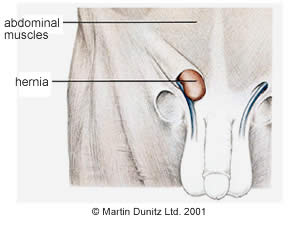| ommon Signs & Symptoms | |||||
| Pain | Swelling | Stiffness | Weakness | Instability | Locking |
Gilmore’s Groin Injury Explained
Gilmore’s Groin is a fairly common injury in kicking sports such as football (soccer), gaelic football and rugby. This condition is named after Jerry Gilmore, the London surgeon who first recognised this syndrome in 1980. The condition is also known as a Sports hernia, but Gilmore’s Groin is a more apt title because, strictly speaking, there is no true herniation.
Gilmore’s Groin is characterised by damage to the tissue that surrounds the Inguinal canal. Specifically, there is a tear to the aponeurosis (a sheet like tendon) of the External Oblique muscle and/or a tear to the tendon of the Internal Oblique muscle.

Gilmore’s Groin Signs & Symptoms
The symptoms of Gilmore’s Groin are characterised by pain during sports movements, particularly twisting and turning. This pain usually radiates to the Adductor muscle region and even the Testicles, although it is often difficult for the patient to pin-point.
Following sporting activity the person with Gilmore’s Groin will be stiff and sore. The day after sports activity, getting out of bed or a car will be difficult. Any exertion that increases intra-abdominal pressure, such as coughing, sneezing or sporting activity can cause pain. In the early stages, the person may be able to continue playing their sport, but the problem usually gets progressively worse.
Pain in the groin and pelvis can be referred from a number of problems, including injuries to the lumbar spine, the hip joint, the sacro-iliac joint, the abdomen and the genito-urinary system, so diagnosis of Gilmore’s Groin requires skilful differentiation.
The diagnosis of Gilmore’s Groin is based on the patient’s history and clinical signs. The most notable clinical sign is widening of the superficial Inguinal ring on the affected side, which can be palpated during the physical examination when the scrotum is inverted with the doctor’s finger. Typically, there is specific pain on coughing and sneezing, as well as sitting up and squeezing the legs together.
Gilmore’s Groin Treatment
What you can do
| Consult a sports injury expert | |
| Wear Compression Shorts whilst waiting for surgery |
Conservative treatment with a Chartered Physiotherapist involves stabilising and strengthening the muscles of the core and pelvic region but this is a stop gap at best. In most cases it is usually possible to continue playing sports while wearing Warm Pants (Compression Shorts), until an opportune time can be arranged for surgery. Core strength and stability exercises can be helpful and allow the person to continue competing for a little while longer. However, there usually comes a time when the person can no longer continue because sports performance becomes so impaired. A surgical approach is required to cure the problem.
Successful surgery is dependent upon accurate diagnosis, meticulous repair and adherence to a standard rehabilitation program. Between 1980 and 2000, of 4,500 patients referred to Jerry Gilmore’s clinic in London, 2,700 were treated surgically. Of the professional soccer players treated surgically, Gilmore reported a success rate of 97%.
A specific rehab program must be carefully adhered to. This prohibits sudden twisting and turning movements, with a gradual progression of pelvic muscle stability, flexibility and strength. Upright standing and walking is encouraged from day one. Straight line jogging can be initiated between 10 and 14 days post-op and straight line sprinting is usually started after 3 weeks. Thereafter, sports specific rehabilitation is graduated, with a return to competition usually possible after five weeks.
The Gilmore protocol warns that some stiffness and discomfort may occur the day after sporting activity and advocates some activity 7 days a week to remedy this.
Gilmore’s Groin Prevention
What you can do
| Use a Swiss Ball for Core Strengthening Exercises | |
| Use resistance bands for Core Strengthening Exercises |
Core Strength and Core Stability exercises can improve muscle function across the trunk and pelvis. Core strength exercises on a mat using a Swiss Ball and Resistance Bands are ideal, because the improved muscular strength and stability can help to counteract the large forces that are applied to the lower abdomen and pelvis. This can reduce the risk of developing Gilmore’s Groin.


